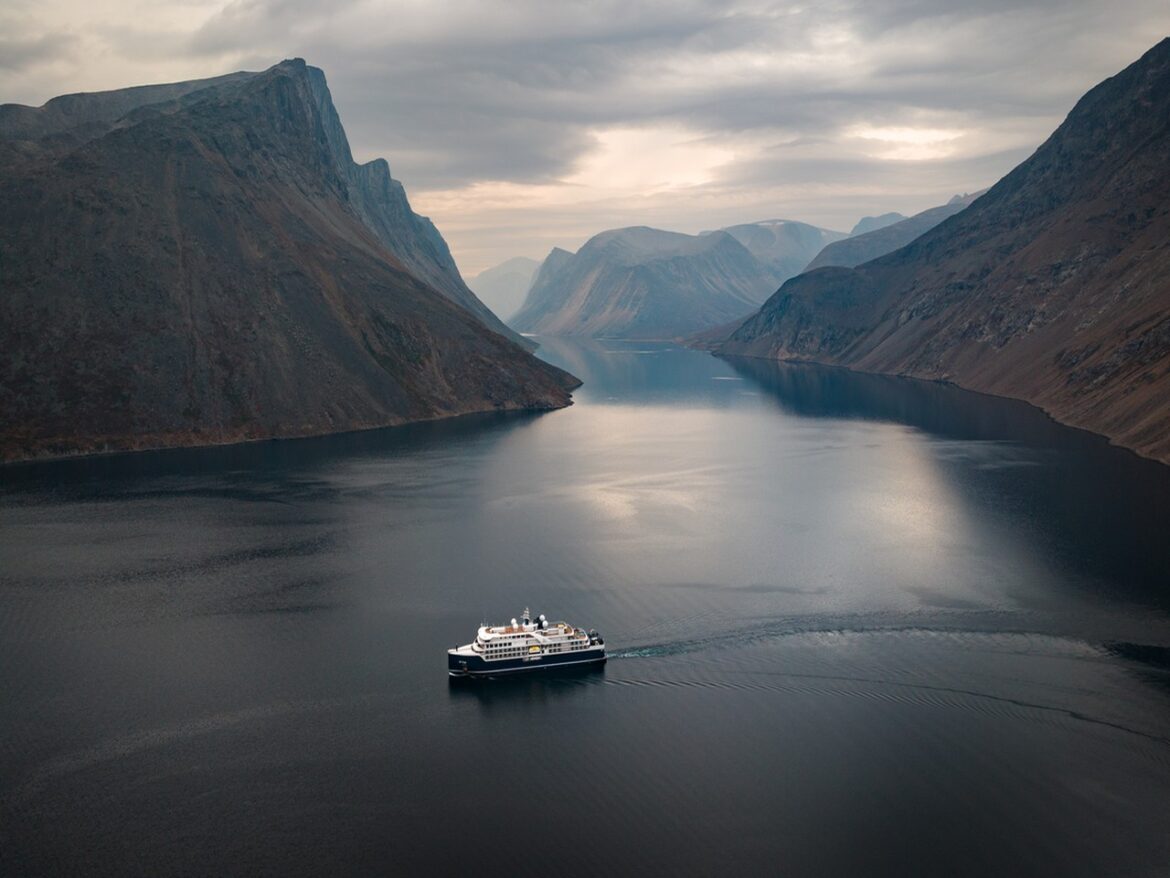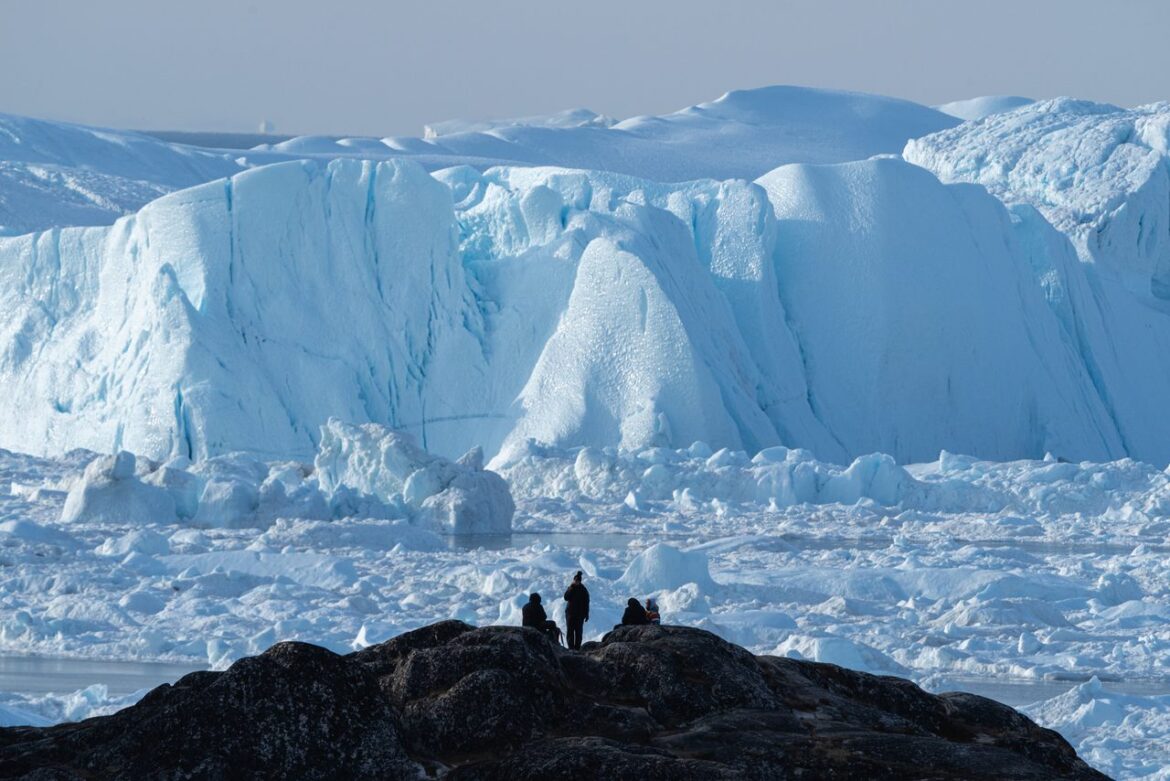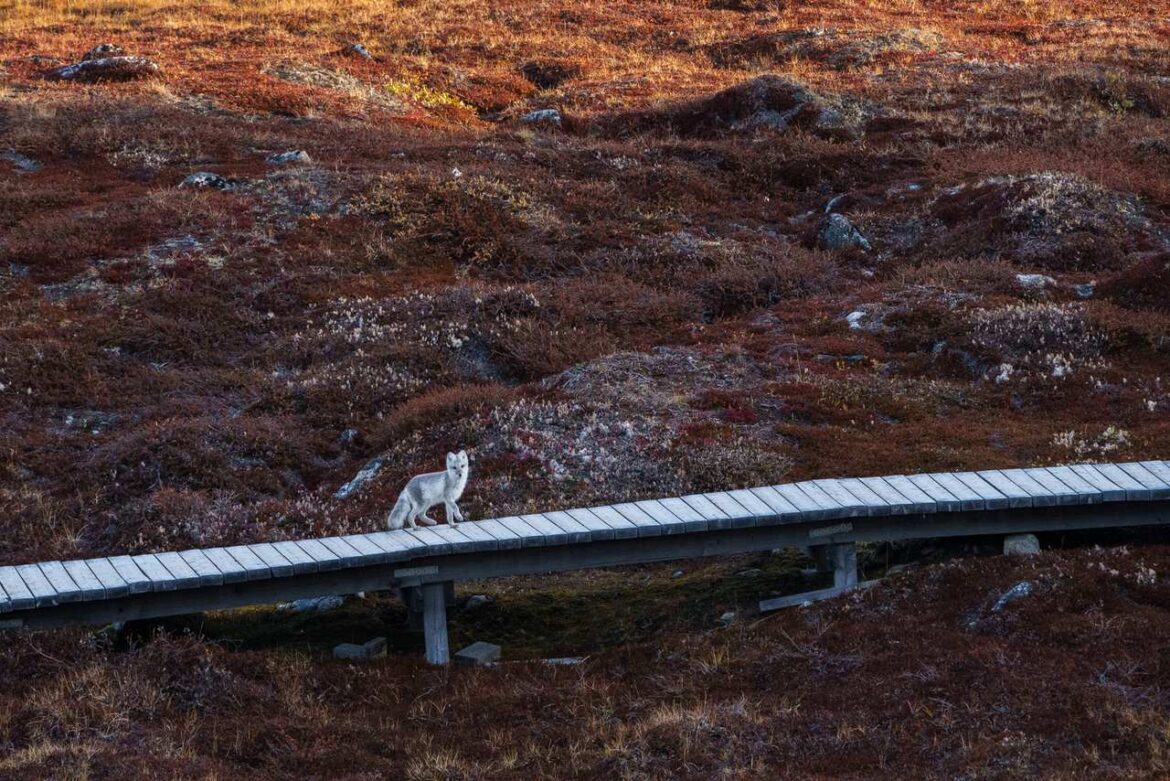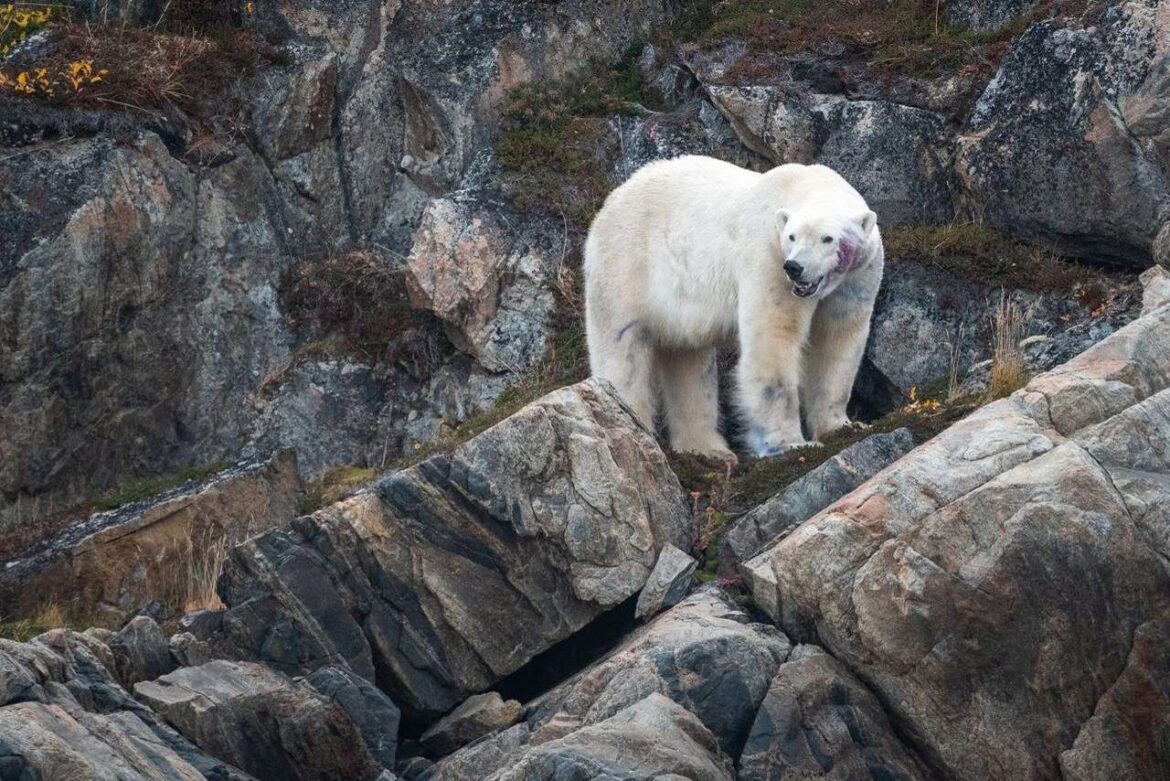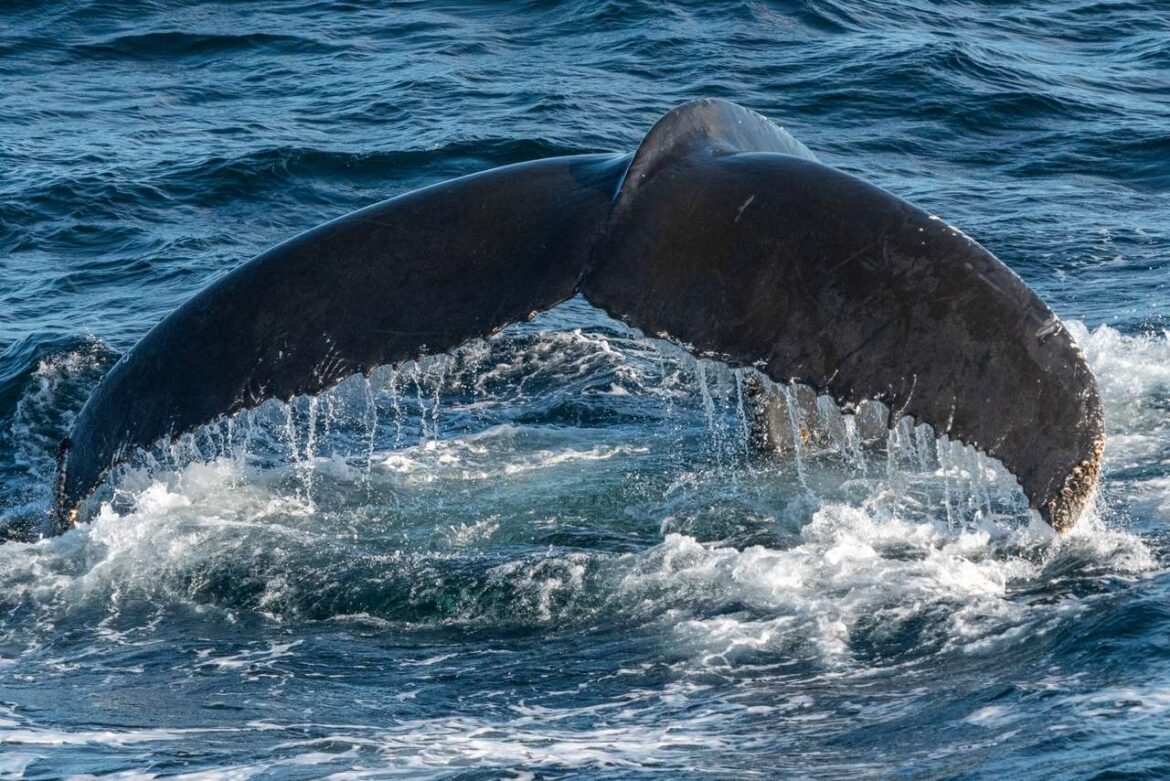It was early afternoon in the Arctic Ocean, and I was sitting in the captain’s chair on the bridge of Swann Hellenic SH Vega peering out at icebergs. Thankfully, the passengers and crew weren’t relying on me to steer a safe passage around them, that was in the First Officer’s hands.
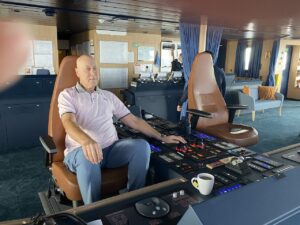
Captain’s chair on Swan Hellenic
It’s not every day you get to sit in the captain’s chair but Swan Hellenic opens the bridge at certain times during a cruise so you can see firsthand just what makes a state-of-the-art cruise ship tick. And trust me, it’s a real thrill.
SH Vega is one of a trio of cutting-edge polar-class boutique ships designed as the new fleet of the relaunched Swan Hellenic heritage brand. A cruise marque that pioneered expedition cruising in the 50s and 60s, and its new owners aim to echo that spirit by taking guests to some of the remotest places on Earth.
My bridge visit was one of the many highlights of an epic 15-night Swan Hellenic expedition cruise around Greenland and the Canadian Arctic and down the Labrador coast to Halifax, Nova Scotia.
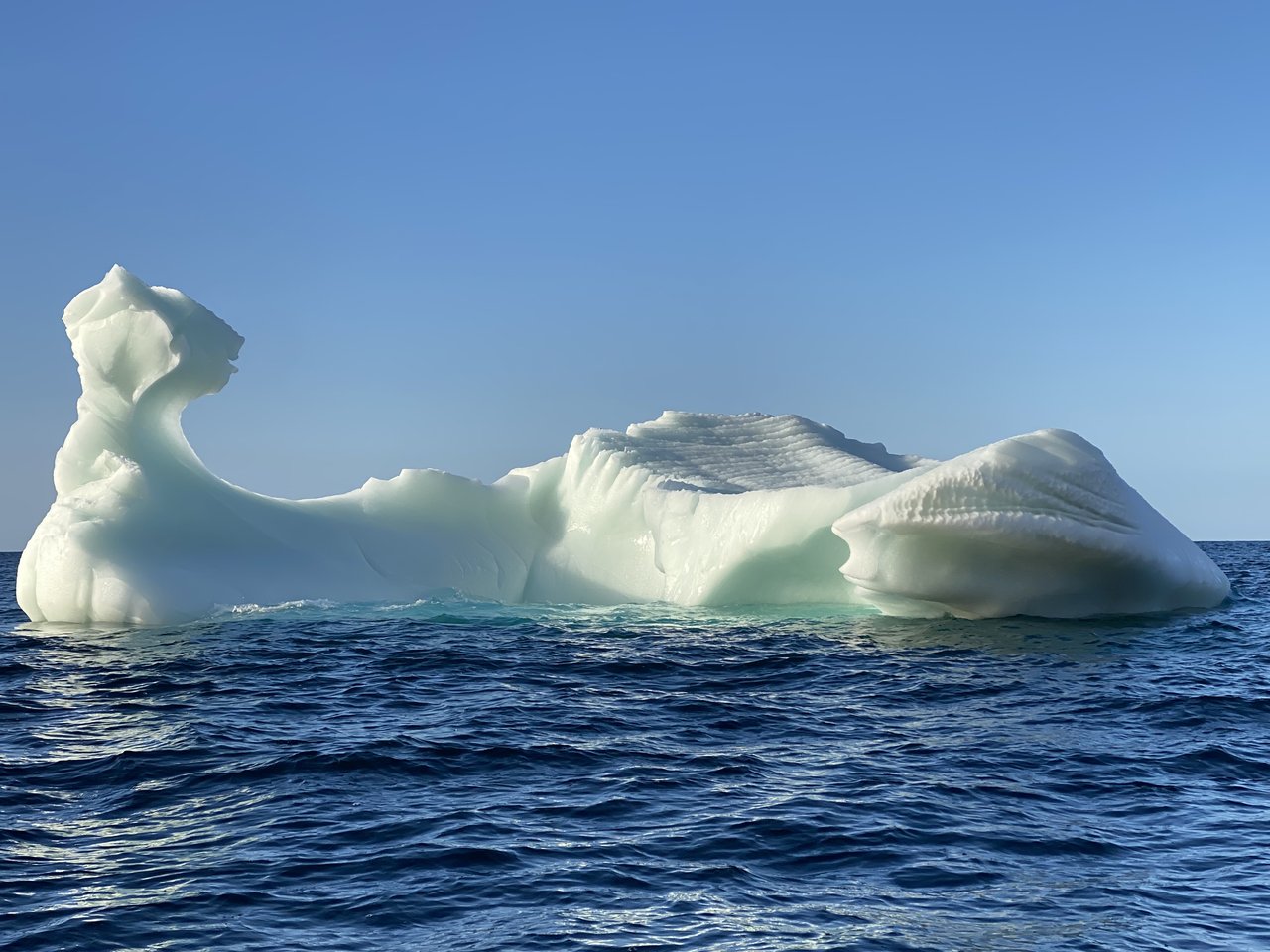
Disko Bay Iceberg c. Andy Mossack
Greenland’s Disko Island is a perfect example, where legendary explorers Cabot, Franklin, and Frobisher set off on ill-fated voyages to find the famous northwest passage. We performed a homage in Disko Bay, cruising in Zodiac dinghies around a field of naturally sculpted icebergs. Nature’s unique art gallery. Each one a masterpiece.
SH Vega – The Ship
My balcony stateroom was spacious Scandi luxury – earthy wooden tones and textures, more a retreat than a cabin. Ample storage, a very comfortable lounge area, a well-equipped bathroom with bath and shower, and, past the sliding floor-to-ceiling glass doors, a 12 sqm balcony.
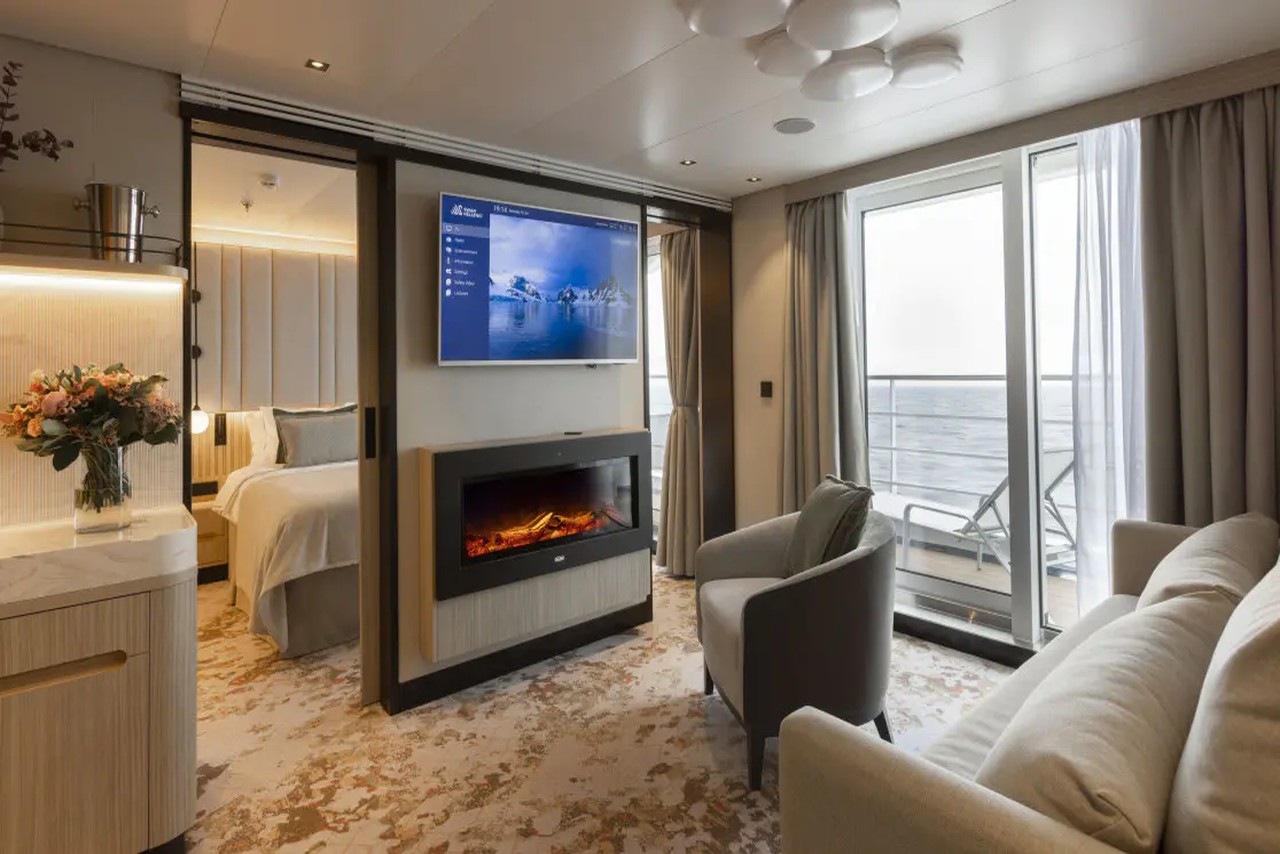
Swan Hellenic Vega Premium Suite
While this ship was built to combat extremes of weather, her interior is sumptuous. With just 152 guests pampered by a crew of 120, this was perhaps the nearest I got to experience life aboard a superyacht. It’s an all-inclusive world; all meals, soft drinks, and selected alcoholic beverages any time, day or night, 24-hour room service, most expedition excursions (only on polar cruises), and all crew gratuities.
With such an impressive staff-to-guest ratio, any comparison to service levels on larger ships is fruitless. On my first morning, I happened to mention a breakfast avocado obsession to restaurant manager Renato, who promptly had a freshly sliced avocado materialise at my table. And every morning after that, without uttering another word.
And while we’re about food, there is flexible seating in Vega’s two restaurants and no formal evenings. You can dine alone or with your new friends, and that includes the officers and expedition team, whose tales of heroic exploits on land and sea make for entertaining dining partners.
Greenland
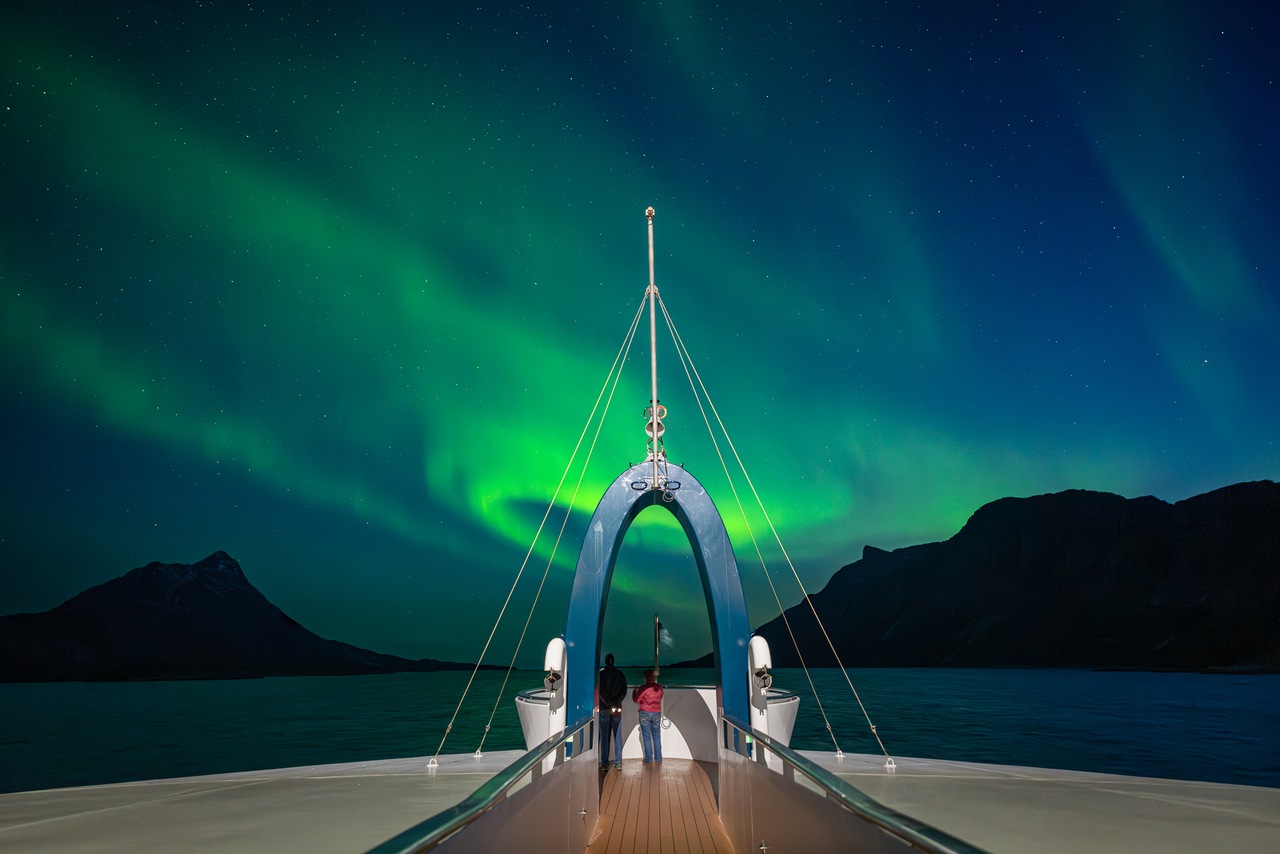
Northern lights, Kangerlussuaq c. YuriChoufour
We joined the ship in Greenland’s Kangerlussuaq Fjord, one of the longest in the world at nearly 200 kilometres and dwarfed on either side by immense three-billion-year-old rock walls. They were our guard of honour as we cruised between them for five hours before finally emerging onto the Davis Strait. By now it was pitch black, and standing out on the ship’s bow, the only light we could see was Nature’s own. The Northern Lights. What a way to kick off a cruise!
The Observation Lounge is the ship’s beating heart. Giant panoramic windows and comfy settees provide the perfect place to have a quiet read, chat with fellow shipmates over a glass or two, and enjoy impressive daily briefings, lectures and stirring tales of exploits from our expedition team. Then if I was feeling brave, I could slip on my parka and nip up to the top deck for a bit of late-night stargazing across an ink-black sky.
The Captain told us on day one, ‘Expedition cruising is all about planning. There’s plan A, then B, and as much of the alphabet as you can get through.’ And true to his word, we worked through the alphabet, changing course numerous times to avoid heavy seas and adding extra Zodiac outings when opportunities arose. The ship even did a U-turn to join two humpback whales, who came alongside and greeted us with perfectly synchronised arcing dives.
In Greenland, the Inuit people have had to adapt, their livelihood stunted by colonisation and the collapse of whaling. Tourism is in its infancy but offers hope, and in the town of Sisimuit, our guide Karen took us out to see working huskies. ‘Many hunters now have snowmobiles instead of dogs’ she tells us ‘but machines can cut out on you in the backcountry. Dogs will always get you home.’
In an excursion to the jaw-dropping Ilulissat Ice fjord, a UNESCO World Heritage Site some 220 miles north of the Arctic Circle, I came face to face with a snow-white arctic fox who stood staring at me on the wooden walkway we were using to snake our way down to the fjord’s glacier. Like a true celebrity, he stood stock still for his photo call before running off into the frozen tundra.
This extraordinary fjord is filled with gigantic icebergs, and over a hundred years ago one calved off the glacier here and sank the Titanic.
Arctic Canada
After a week exploring Greenland, we moved on to Canada and woke up in Nunavut at Baffin Island in Arctic Canada the gateway to the northwest passage.
We transited down the Labrador coast and entered the Torngat Mountains National Park enjoying privileged isolation. Just us, a tranquil fjord, and immense mountains.
Out came the Zodiacs again and we spotted a huge polar bear lying close to shore. It’s at that moment when you know you are witnessing something special. We got as close as we dared, turned the outboards off and just watched him lumbering around.
Then, even the polar bear was upstaged. One of the team spotted a whale blow, and we waited speechless as an adult Minke whale appeared. It slowly swam around us curiously checking each Zodiac out, before heading back into the depths. How many more Attenborough moments were we going to get?
We got our first real taste of Newfoundland at Red Bay, a historic whaling town of 16th-century Basque whalers where at one time over 1,000 men harvested Right and Bowhead whales on an industrial level.
Back on board, we’re all made honorary Newfoundlanders in the ‘ancient’ ceremony of codfish lip-kissing before downing a shot of screech, the locally made rum.
Walking on The Earth’s Mantle
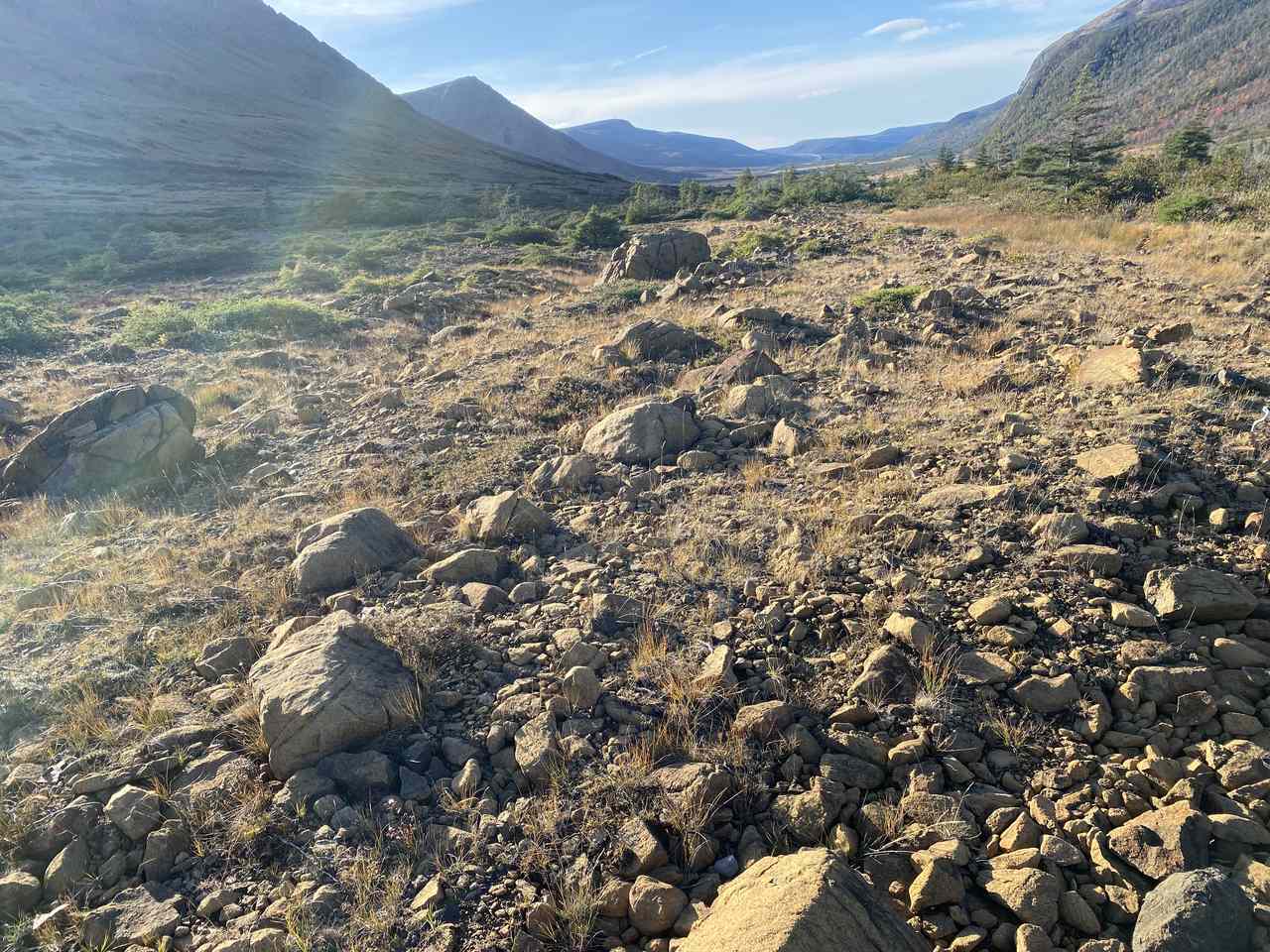
The Earth Mantle
Our final stop before heading to Halifax was Bonne Bay, where we spotted trees for the first time, all decked out in their autumn colours.
This pretty coastal town is popular as the gateway to the Tablelands in Gros Morne National Park, one of only three places in the World where it’s possible to walk on the Earth’s mantle; the inner soul of our planet pushed skyward from far below the Earth’s crust when the Appalachians were born.
And we do just that in the company our expedition team who are just as in awe as we are. A visit to the wonderful Gros Morne Visitor Centre adds scientific meaning to our experience. The national park merited another visit, a quite extraordinary glacial valley and a fitting finale to our expedition excursions.
Verdict: Cruising Greenland and the Canadian Arctic with Swan Hellenic was a very special experience. Not only to witness such remote beauty and all those wildlife encounters but to observe it in such splendid isolation was an absolute privilege.
Fact File
Cruising Greenland and the Canadian Arctic with Swan Hellenic. A 15-night Greenland to Nova Scotia – Exploring the Canadian Arctic, aboard SH Vega, departing 25 September 2024, costs from £8,311pp (two sharing) and includes regional flights to the port of embarkation and/or disembarkation, group return transfers from the airport to the cruise port, one-night pre-cruise accommodation, all meals, 24-hour room service, selected drinks 24-hours a day, lecture programmes by an experienced expedition team and guests speakers, branded expedition parka and use of rubber boots in Polar Regions, standard Wi-Fi, and selected shore excursions/expeditions. Also included is an excellent polar parka, waterproof backpack, and water bottle (to take home), and specialist waterproof muck boots for expeditions.
Please visit Swan Hellenic

